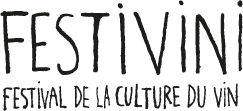SAUMUR BRUT
SAUMUR BRUT
The wine
Annual production : 90 000 hl dont environ 20 % en rosé
Basic yield : 67 hl/ha
Varities : Chenin, Chardonnay, Sauvignon, Cabernet Franc, Cabernet Sauvignon, Pineau d'Aunis, Grolleau… with blending constraints favoring traditional grape varieties
Dominant cultural practices : Density of 4,500 to 5,000 vines/ha. Single Guyot pruning.
Degustation
Eye : Crystalline, clear color with gray to straw yellow reflections with golden hues. Salmon to cherry color for the rosé wines.
Nose : White fruits, lemon balm, hazelnut, almond and sometimes a touch of vanilla or toast. Rosé wine : aromas of small red fruits.
Palate : Fine bubble, elegant mouth, fresh (sometimes tonic) on the brut, softer on the demi-sec and slightly tannic on the rosé.
Serving temperature : Serve at 6-8°, in flutes.
Harmony of food and wine : Ideal for festive occasions, as an aperitif, or with fish, shellfish, white meats in cream sauce and desserts (sponge cake, ice cream, sorbets ...).
Ageing potential: Sparkling wines after disgorgement, which takes place at the end of the ageing on lees, are kept for several months in the cellar before being marketed. They are therefore fully expressed in the year following their marketing, and even in the 2 to 3 years following.
The vineyard
Location: The production area of Saumur fine bubbles is that of the Saumur appellation but extended to the west, which corresponds to the former administrative district of Saumur.
Area : 1 500 ha.
History: The ideal conditions for the production of fine bubbly wines are gathered in the Saumurois: a fresh wine produced on the hillsides which easily takes the foam, then excellent cellars of breeding dug in the slope of tuffeau and, with the foot of this slope, the Loire to transport the wines towards the places of consumption.
Soil & climate : The area of Saumur's fine bubbles, on limestone soil (tuffeau), extends over part of the schist soils of "Anjou noir". The variability of the soils and the nuanced climates (exposure, proximity or not of the Loire) explain the expression of various grape varieties within the appellation.


